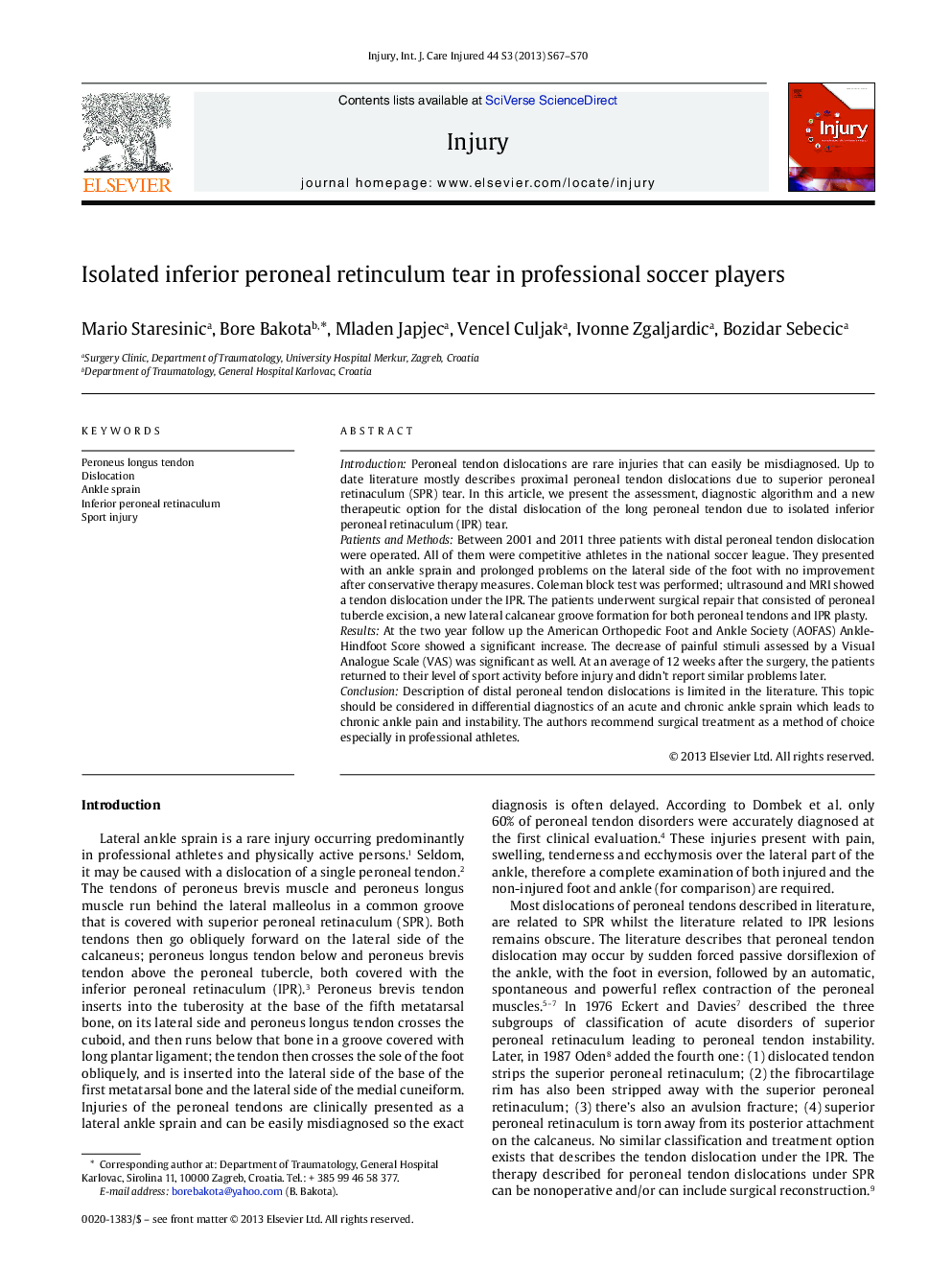| Article ID | Journal | Published Year | Pages | File Type |
|---|---|---|---|---|
| 3240353 | Injury | 2013 | 4 Pages |
IntroductionPeroneal tendon dislocations are rare injuries that can easily be misdiagnosed. Up to date literature mostly describes proximal peroneal tendon dislocations due to superior peroneal retinaculum (SPR) tear. In this article, we present the assessment, diagnostic algorithm and a new therapeutic option for the distal dislocation of the long peroneal tendon due to isolated inferior peroneal retinaculum (IPR) tear.Patients and MethodsBetween 2001 and 2011 three patients with distal peroneal tendon dislocation were operated. All of them were competitive athletes in the national soccer league. They presented with an ankle sprain and prolonged problems on the lateral side of the foot with no improvement after conservative therapy measures. Coleman block test was performed; ultrasound and MRI showed a tendon dislocation under the IPR. The patients underwent surgical repair that consisted of peroneal tubercle excision, a new lateral calcanear groove formation for both peroneal tendons and IPR plasty.ResultsAt the two year follow up the American Orthopedic Foot and Ankle Society (AOFAS) Ankle-Hindfoot Score showed a significant increase. The decrease of painful stimuli assessed by a Visual Analogue Scale (VAS) was significant as well. At an average of 12 weeks after the surgery, the patients returned to their level of sport activity before injury and didn't report similar problems later.ConclusionDescription of distal peroneal tendon dislocations is limited in the literature. This topic should be considered in differential diagnostics of an acute and chronic ankle sprain which leads to chronic ankle pain and instability. The authors recommend surgical treatment as a method of choice especially in professional athletes.
